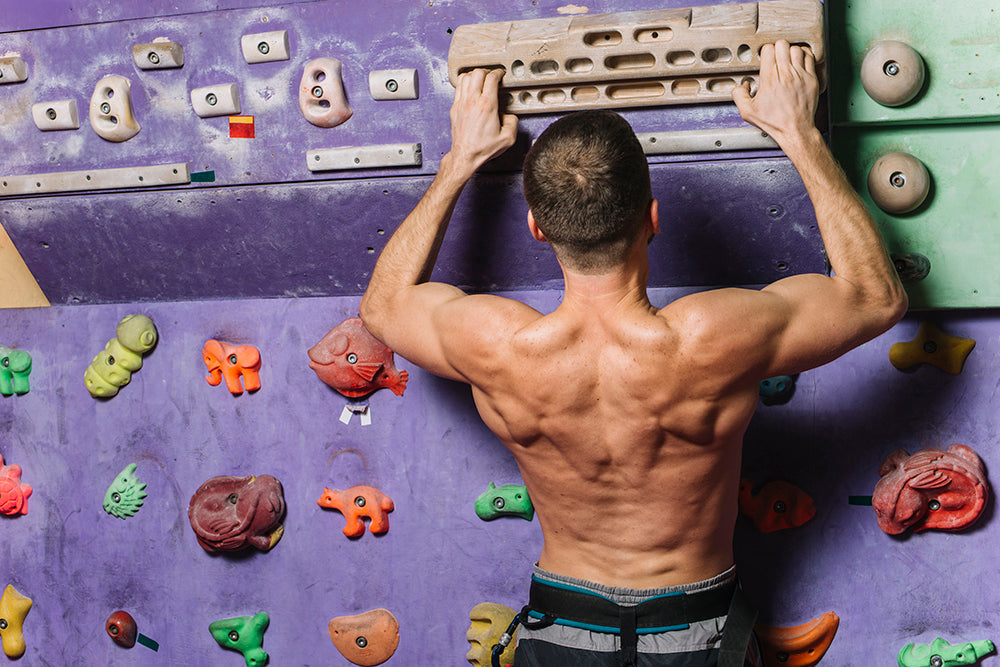
Finger Strength Weakness Diagnosis & Targeted Training
Share
Finger strength is rarely balanced—most climbers have specific weaknesses, whether in pinch strength, endurance, or isolated finger power. Identifying and fixing these imbalances is key to preventing injuries and maximizing climbing performance. This guide covers self-assessment methods, specialized training protocols, and rehab-focused exercises to strengthen your weak links.
Self-Testing Your Finger Strength Weaknesses
1. Weak Pinch Strength
-
Test: Try holding a 25mm pinch block for 10 seconds.
-
If you can’t maintain grip, your pinch strength needs work.
-
-
Common in: Crack climbing, slopers, and wide-pinch moves.
2. Weak Ring/Pinky Finger (4th & 5th Digit)
-
Test: Hang from a 20mm edge using only your middle, ring, and pinky fingers.
-
If you fail quickly, your outer fingers are underdeveloped.
-
-
Common in: Small crimps and pockets.
3. Poor Finger Endurance
-
Test: Perform 7-3 repeater hangs (7 sec on, 3 sec off) for 6 sets.
-
If you can’t complete all sets, your endurance is lacking.
-
-
Common in: Long sport routes or high-volume bouldering.
Targeted Training Solutions
1. Fixing Weak Pinch Strength
✔ Weighted Pinch Block Holds
-
Hold a pinch block (25-50mm) for 5-10 sec, 4-6 sets.
-
Progress by adding weight (start with 5-10lbs).
✔ Towel Pinch Pull-Ups -
Drape a towel over a bar, grip both sides, and do controlled pull-ups.
Why? Builds thumb engagement crucial for slopers and wide pinches.
2. Strengthening Ring & Pinky Fingers
✔ 3-Finger Drag Hangs (Middle, Ring, Pinky)
-
Hang from a 15-20mm edge, excluding the index finger.
-
Start with 5-7 sec, progress to 10-15 sec.
✔ Offset Fingerboard Hangs -
One hand on a large edge, the other on a small edge to isolate weaker fingers.
Why? Prevents over-reliance on the index/middle fingers.
3. Improving Finger Endurance
✔ Density Hangs (10 sec on / 20 sec off × 8 rounds)
-
Use a 15-20mm edge, focusing on open-hand grip.
✔ ARC Training (30-45 min of continuous easy climbing) -
Trains capillary density for better recovery between moves.
Why? Essential for long routes or comp-style boulder problems.
Rehab & Injury Prevention Strategies
1. Finger Flexor Eccentrics (Tendon Resilience)
✔ Rice Bucket Reverse Curls
-
Dig fingers into rice, then slowly open hand against resistance.
✔ Weighted Finger Extensions -
Use a rubber band or finger extensor trainer for 3-4 sets of 15 reps.
Why? Prevents tendonitis and pulley strains by balancing muscle groups.
2. Antagonist (Extensor) Training
✔ Reverse Wrist Curls
-
3 sets of 12-15 reps with light dumbbells.
✔ Finger Rubber Band Extensions -
Spread fingers against bands for 3 sec holds, 10 reps.
Why? Reduces muscle imbalances that lead to elbow pain (e.g., climber’s elbow).
Key Training Principles
✔ Weakness Analysis – Test regularly to track progress.
✔ Progressive Resistance – Gradually increase weight/hang time.
✔ Tendon Recovery – Prioritize 48-72h rest between intense sessions.
Final Tips for Long-Term Progress
-
Avoid over-crimping (increases pulley injury risk).
-
Warm up properly (10 min of easy hangs + wrist mobility drills).
-
If pain persists, STOP (early-stage rehab beats chronic injuries).
By diagnosing weaknesses early and using targeted exercises, you’ll build balanced, injury-resistant finger strength—helping you climb harder and longer. Train smart, and send stronger! 🚀
